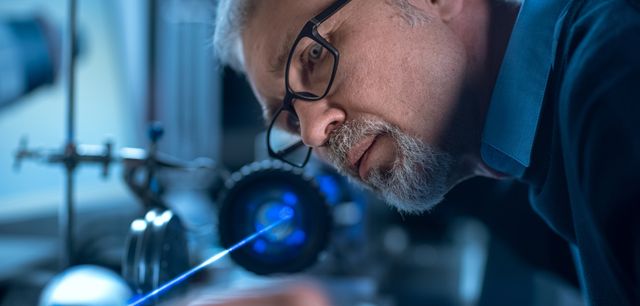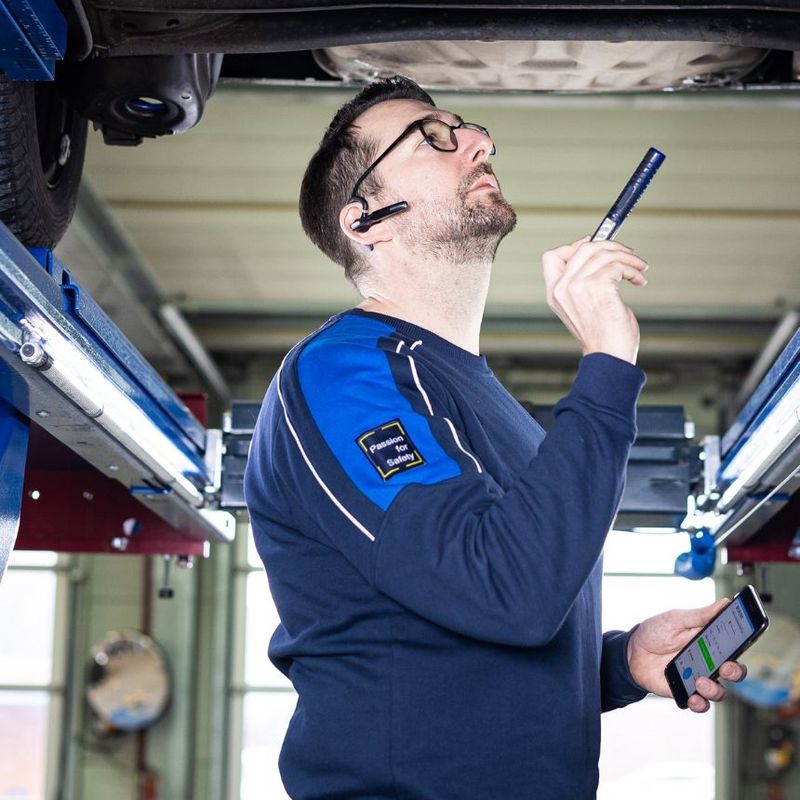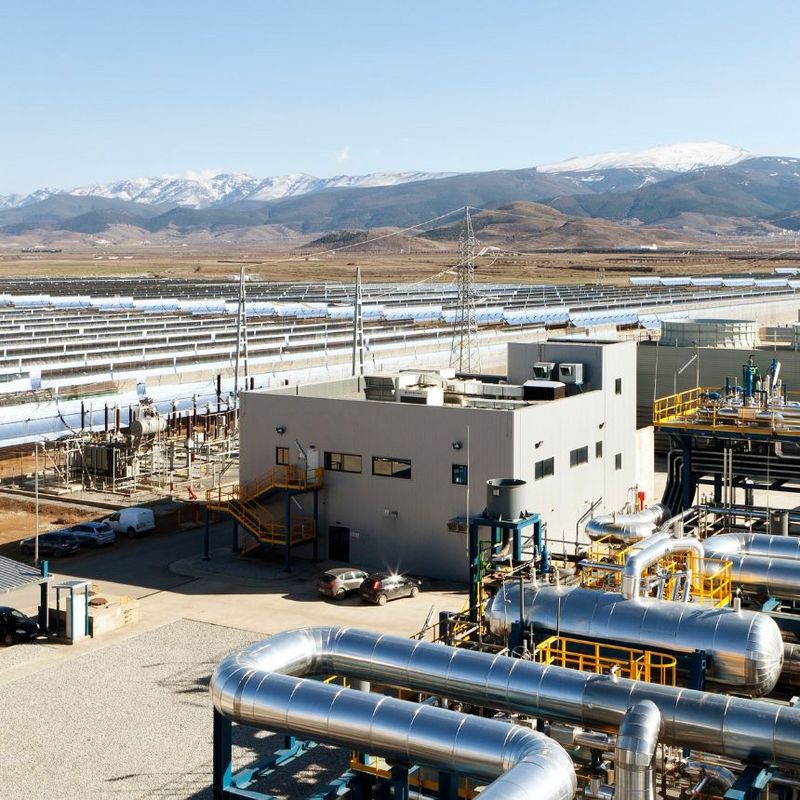14 March 2024
Laser technology is fundamental to the industrial, medical, science and metrology sectors. But ultrashort pulse lasers are the relatively new kids on the block. Philipp Denger, expert in radiation protection and X-ray technology at TÜV NORD, explains how these lasers work, what advantages they offer over conventional lasers, and when and why they fall within the scope of radiation protection testing.
#explore:Mr Denger, what is an ultrashort pulse laser?
Philipp Denger: The special feature of the ultrashort pulse laser, or USP laser for short, is in the name: It doesn’t emit laser radiation continuously, but in extremely short pulses – like a torch that is switched on and off very quickly. However, USP lasers do this at speeds that would be beyond the powers of a human being. The pulses of modern devices last for a few femtoseconds, a femtosecond being a quadrillionth of a second. By way of comparison, light travels the 400,000 kilometres from the moon to Earth in just over a second. In one femtosecond, however, it would only get to travel from one side of a small bacterium to the other. The light energy of the USP laser is concentrated on these incredibly short intervals.
What are the advantages of a USP laser of this kind for which areas of application?
Unlike a normal laser, a drill hole made with USP lasers, for example, doesn’t fray as much. In industry, they are used to cut, engrave or drill materials particularly finely and precisely. The second advantage is that, when materials are processed with conventional lasers, a lot of heat is generated in the material. This is not usually a problem with metals, but it does become an issue for less thermally conductive materials. With the USP laser, things are different. This is because its very short pulses minimise heat generation, making it ideal for processing plastics, glass, very thin metals or other heat-sensitive materials. USP lasers are also already being used in medicine – mainly where standard lasers are in use, for example in surgical eye procedures. Here, too, the fact that these lasers generate little heat means that they are correspondingly gentle on tissue.
About Philipp Denger: Philipp Denger is an expert in radiation protection and X-ray technology at TÜV NORD. The physicist carries out his tests to help protect people from X-rays. Denger is also a member of the “Radiation Protection Technology” Committee of the Commission on Radiation Protection, an expert body that advises the Federal Environment Ministry on radiation protection issues.
And last but not least, USP lasers have opened up new possibilities in science and research: They can be used to observe biological and chemical processes at the atomic level that are otherwise impossible for us to see. With a USP laser, we can actually watch atoms exchange electrons or form molecules. To make it possible to observe ever faster processes, researchers are therefore working on making the laser pulses shorter and shorter. In the industrial sector, the main trend is towards ever higher performance. There is an undesirable side effect, however: From an irradiance of about 1013 watts per square centimetre, these devices also emit X-rays (see box). By definition, this makes them a kind of X-ray machine, meaning that they fall within our inspection remit.
So which devices need to be tested?
The legislator has defined three categories: For the most dangerous laser systems, you need a permit, a kind of driving licence if you like, to be allowed to use them at all. Operators must register the less dangerous ones with the industrial inspectorate. The third category can be used without informing an authority. From the operating instructions alone, however, it isn’t easy to determine which of these three categories any given USP laser falls into. This must instead be determined individually for each device in a categorisation test. This is because whether a USP laser emits X-rays depends on various factors, including the material you want to process with it.
Depending on the classification, the devices are then tested periodically: The particularly dangerous ones once a year, and the less dangerous ones every five years, where the non-hazardous ones don’t need to be tested at all. USP lasers of the highest category are therefore considered more critical and inspected more often than X-ray machines in the medical or technical field. These include, for example, hand luggage scanners at the airport, which must be checked every five years. During the test, we measure whether the devices comply with the limit values for X-rays, and we also carry out a functional test: Is the protective housing securely locked during operation? Or, failing this, will the laser be switched off immediately if someone forces open the housing door?
© TÜV NORD, Phillip DengerTesting a USP laser system for material processing: Among other things, the dose of X-rays is measured outside the protective housing.
What are the biggest challenges in testing USP lasers?
You run into a problem before you even carry out the test: Many operators of such systems simply aren’t yet aware that their devices can emit X-rays and that they’re obliged to have them tested. It’s true that the trade inspectorate is now offering educational initiatives, as are, in some cases, the laser manufacturers themselves. But there’s still a lot of educational work to be done to appropriately raise the awareness of the operators of USP lasers. The actual testing of such systems is inherently challenging, as it involves newly emerging technology and new equipment. If, as a TÜV expert, you inspect cars, lifts or conventional X-ray systems, for example, you’ll get to know the types of devices and their various special features after a while. This ceases to apply with new devices of this kind, of course. But that’s exactly what makes these tests so interesting. There’s also a specific technical difficulty in testing USP lasers: The X-rays emitted by these lasers are so low energy that they’re difficult to measure with the mobile measuring devices currently on the market. This is where we’re calling on the manufacturers of measuring instruments to develop devices that are better suited to USP lasers.
Until then, and to compensate for possible measurement errors, we’re currently working with ample margin for error in our tests: We make sure that the measured values are at most ten times below the limit value. This also reflects the principle of radiation protection, which is not to allow emissions to bump up against the limit values, but to keep them as low as possible to avoid unnecessary exposure on the part of the staff and the population.
What role do USP lasers play in industry today, and how is this likely to develop in the future?
The use of USP lasers has increased enormously in recent years. And, of course, technical development doesn’t stand still. The regulations must also take this into account. While the set of rules for conventional X-ray machines has been refined over decades, the USP laser is still in its infancy. The experience we’re acquiring in the audits is also being incorporated into the work of the regulatory bodies in which we’re represented. In other words, we’re working on several levels to develop this set of rules further, which is our contribution to making this new technology as safe as possible.
How does an ultrashort pulse laser become an X-ray machine?
Solid, liquid and gaseous: It’s in these three states of aggregation that we encounter matter in everyday life. If you shoot a USP laser with a high enough power density at a piece of metal, for example, the material evaporates. What arises is hot plasma – the fourth state of matter, as is found in the sun or in lightning. The electrons are released from their shell, are no longer bound to the atomic nucleus and float around freely, as it were, Philipp Denger explains: “And accelerated electrons, that’s to say moving electric charges, emit X-rays.”





